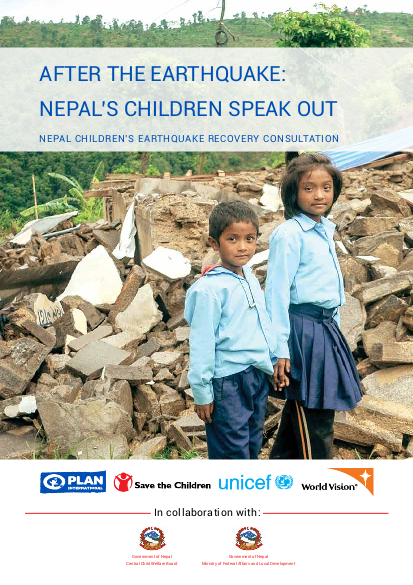
On April 25 2015, a deadly 7.8-magnitude earthquake struck Nepal. The death toll was confirmed as over 8000 and caused massive displacement. The international aid community responded immediately but the inaccessibility of rural mountain areas made aid hard to reach. As early recovery moves to long term rebuilding and rehabilitation, this assessment report and recommendations highlight the continuing need for shelter, hygiene and healthcare, education, protection and psychosocial support combined with reliable communication with communities. Children highlighted gaps in accurate information provision about the earthquake which led to rumours and misinformation as well as information required in advance on what aid is available where and where they can go to receive help, what they can expect from the government.
The Nepal Earthquake Children consultation was conducted by four child-centered agencies (Save the Children, Plan International World Vision, and UNICEF) in collaboration with the Ministry of Federal Affairs and Local Development (MoFALD) and the Central Child Welfare Board (CCWB). The consultations were conducted using Focus Group Discussions (FGDs) with more than 1,800 girls and boys from the 14 most severely-affected districts. The objectives of the consultation were to hear directly from children the challenges they are facing in the aftermath of the earthquakes; to assess the impact of the crisis on their roles, responsibilities and future opportunities; and to seek their views on and recommendations for recovery.